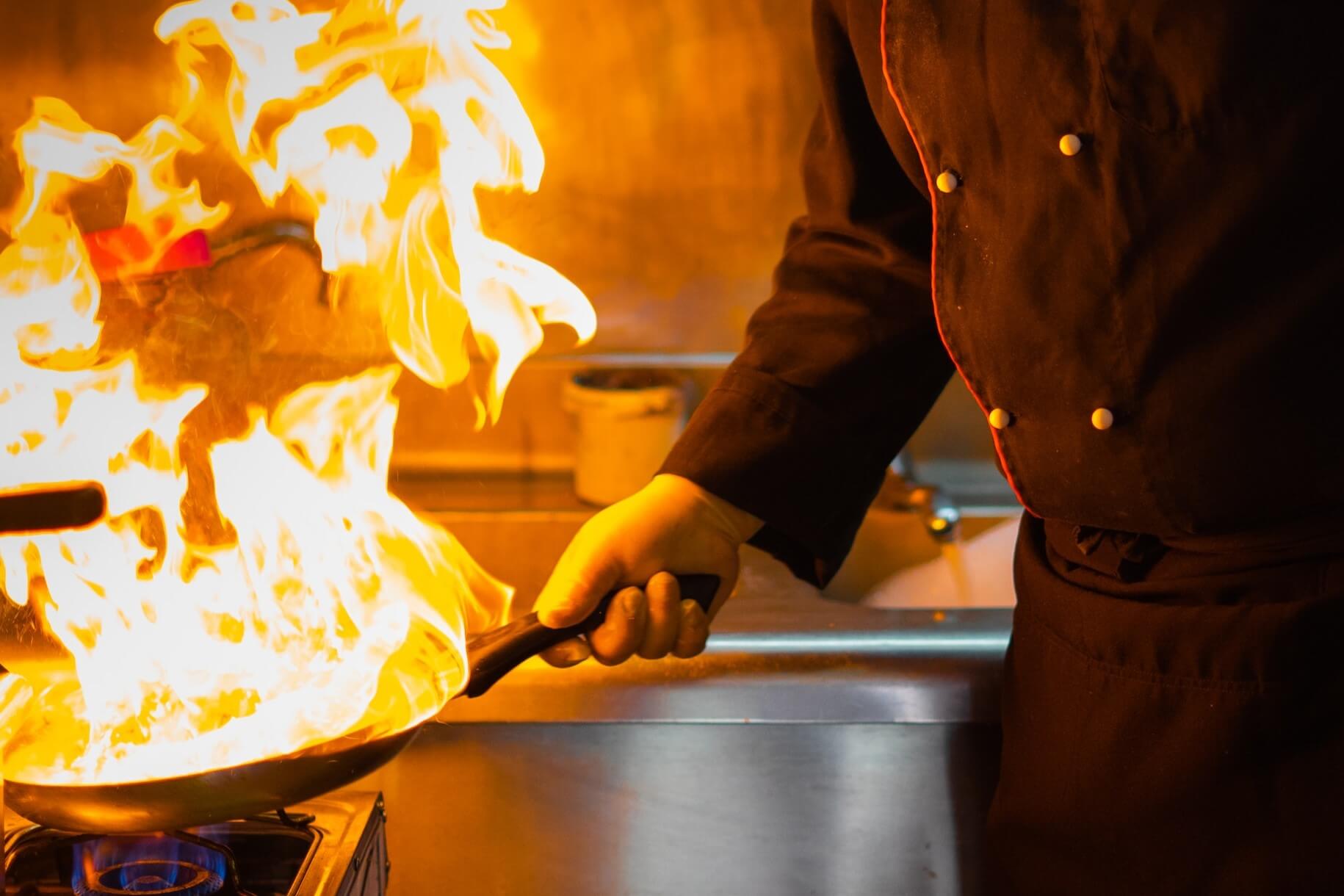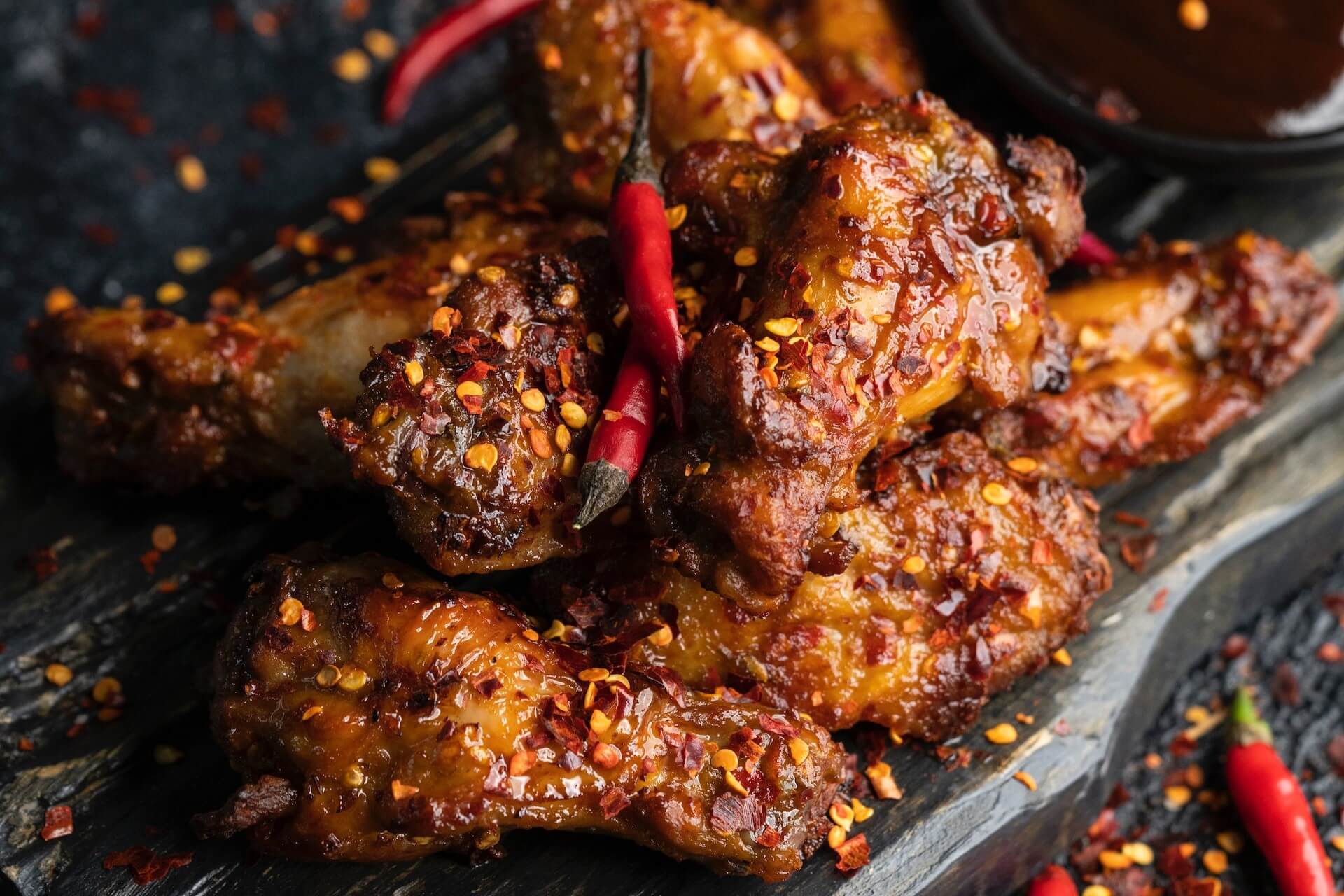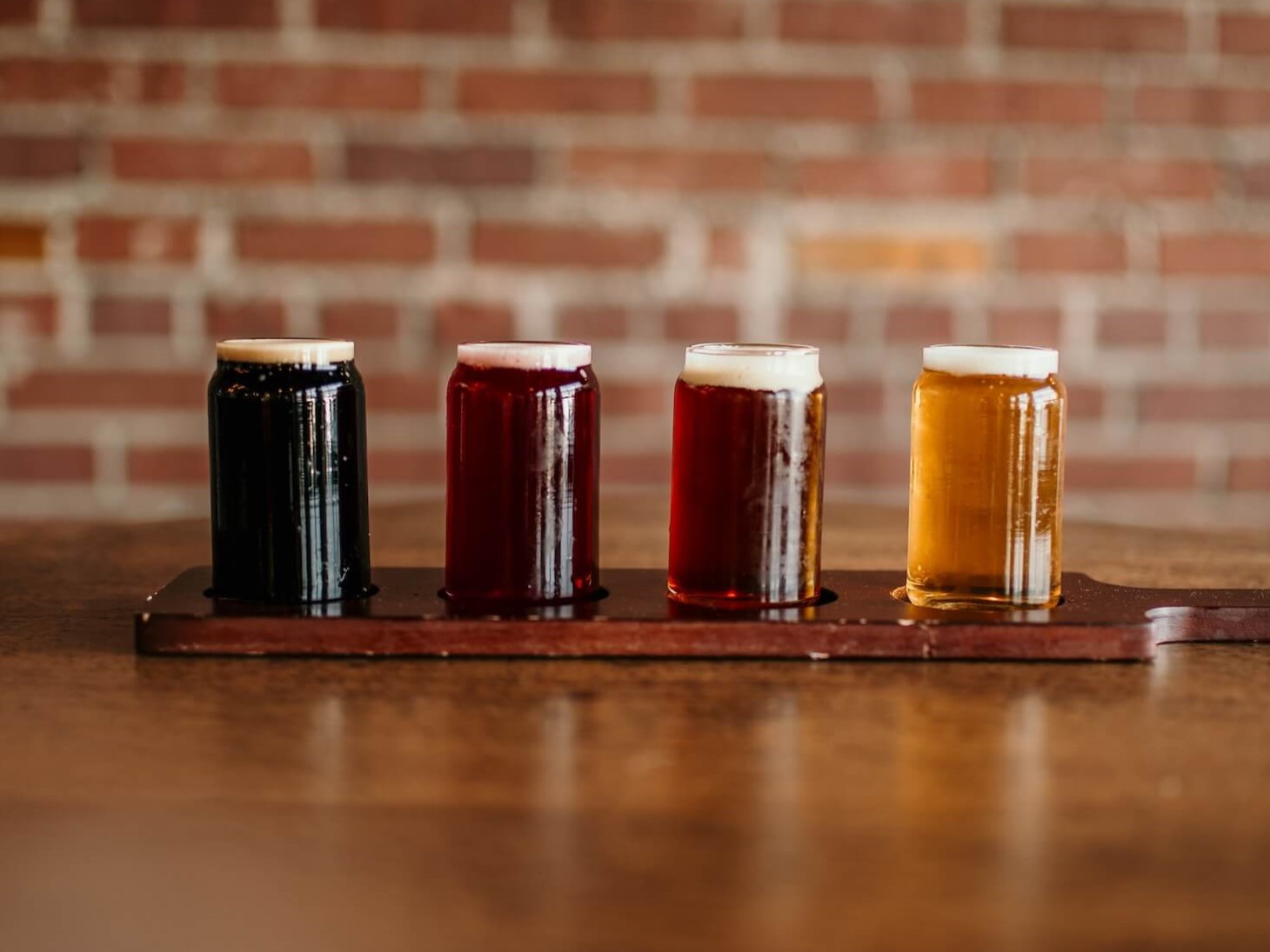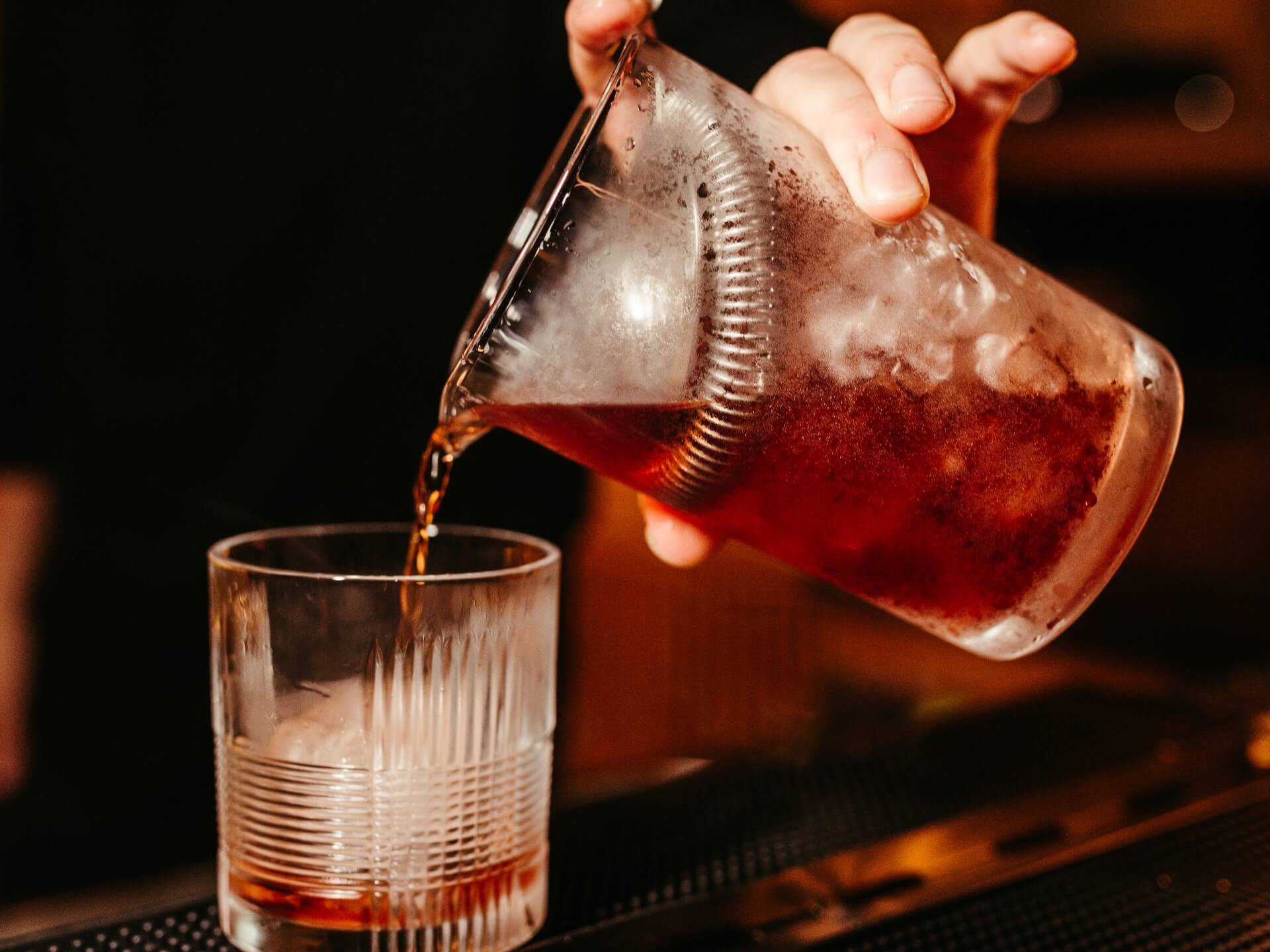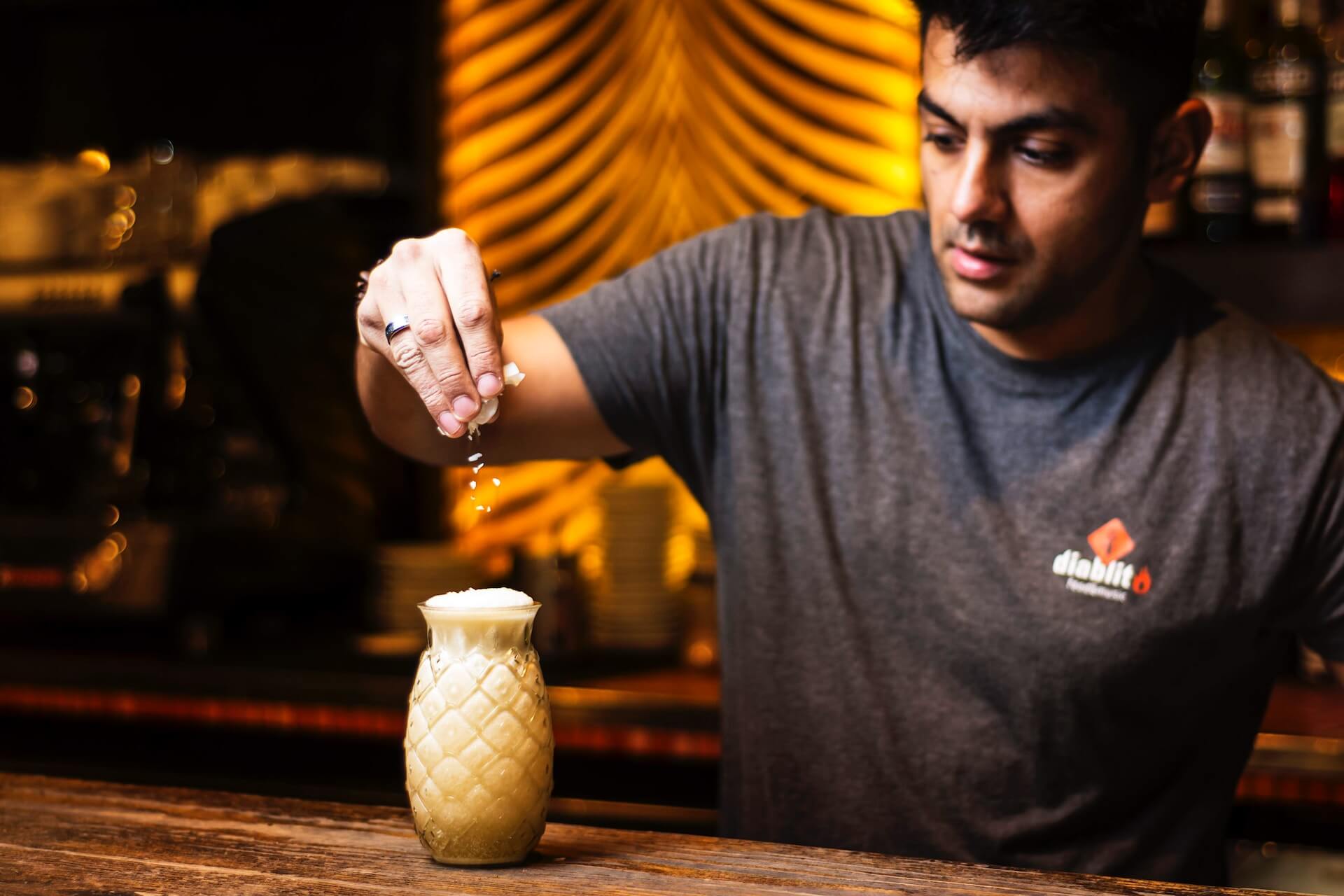BBQ Brawl: ‘Cue Tips from Chef Brian Duffy
by David Klemt
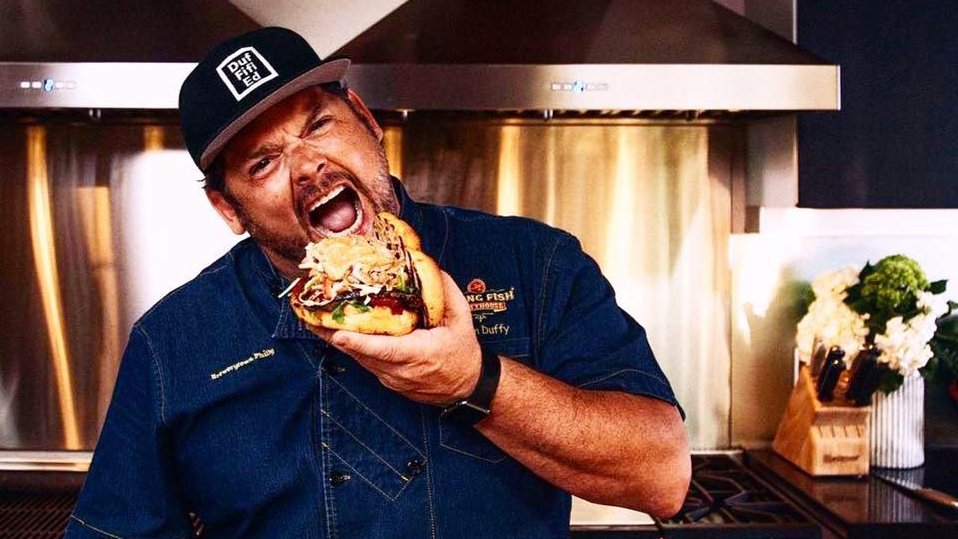
Friend of the Bar Hacks podcast and KRG Hospitality Chef Brian Duffy is rocking it on season four of Food Network‘s BBQ Brawl.
And he’s dropping barbecue and cooking jewels while killing it on multiple styles of grill.
When we meet Chef Duffy on episode one of BBQ Brawl, he’s introduced as “The Renowned Restaurateur.” This makes sense given the fact that he has helped open more than 100 restaurants throughout his career.
Regarding grilling and barbecuing, Chef Duffy will use elements of whatever style he thinks will work best for a given situation. As he explains it, his barbecue “isn’t bound by the rules of any one style.”
View this post on Instagram
I also want to point out that there’s what appears to be a 1950s-era Dodge Power Wagon, perhaps a Series 1 or Series 2 model, on Star Hill Farm, where this show was filmed. This isn’t relevant in any way to cooking, grilling, or barbecue. I’m just a Car and Motorcyle Guy® and I noticed the Power Wagon immediately.
Also, be sure to check out episode 33 and episode 53 of the Bar Hacks podcast to hear from the chef himself.
Alright, let’s check out some tips and tricks from Chef Duffy that he has shared on season four of BBQ Brawl. Like he said to the camera in the first moments of episode one, “Students, meet your pit master.”
Episode 1
If you want your food to be charred, you need to commit.
“You’ve gotta let it sit. Don’t move it,” says Chef Duffy. “Let that char happen.”
It’s just that simple. Patience is a cooking technique.
Dishes
Signature Tacos
- Mulita, a Mexican street taco made by dipping a tortilla in birria broth.
- Togorashi- and ancho-chili-smoked red Snapper taco with “a fun little slaw.”
View this post on Instagram
Team Challenge: “California Smoke” menu (Fire delivery: Santa Maria grill)
- Cabbage, kale, Swiss chard medley with beans
- Scallops and smoked crab salad with preserved lemon gremolata and avocado (collaboration with Chef Larissa Da Costa; Chef Duffy prepared the smoked crab salad)
Episode 2
One interesting bit of Chef Duffy trivia is that he has knife skills that rival John Wick’s. I’m confident in saying that they could’ve raided Chef Duffy’s impressive carbon steel knife collection to film the melee scene in John Wick: Chapter 3 – Parabellum.
Now, he does nick himself during the advantage challenge in this episode. The nick requires Chef Duffy to double-glove up. However, this is a fluke. Check out his knife skills below:
View this post on Instagram
Dishes
Elimination Challenge:”Due West” menu (Fire delivery: Santa Maria grill. Direct-contact coal roasting)
- Cast iron skillet-cooked mushroom gravy (portobello, maitake, shiitake, rosemary, garlic, butter) for Pitmaster Robert Smith’s quail.
- Hot coal-roasted butternut squash topped with crispy, grilled pork belly
Episode 3
While Chef Duffy is no stranger to the pitmastery of fish, he’s always done so in a controlled environment.
Well, this competition show is much more chaotic than a standard restaurant kitchen. Of course, chaos doesn’t cramp Chef Duffy’s style too much.
In preparing his salt-crusted branzino in episode three, he chars lemons and limes, then squeezes them over the fish and creates a mixture with egg whites. After salting, Chef Duffy once again shows that patience is a key element of technique: he leaves the stuffed and salted branzinos to rest.
Chef Duffy also puts another of his specialties on full display in this episode: fried rice. Anyone who has seen Chef Duffy do a fried rice demo knows how good his preparations are.
During this episode, he prepares fried rice in a wok on a Santa Maria grill. For this element of his dish he chooses basmati, in part for its fragrance. Along with carrots and green beans, Chef Duffy’s BBQ Brawl fried rice includes onion, garlic, and bacon. He then hits it with ponzu and soy sauces.
You may think the bacon is the star of this fried rice, but that isn’t the case. The real standout is freshly prepared salt-cured eggs. For this element of the dish, Chef Duff places yolks directly onto a bed of salt.
“What that does is it pulls the moisture out of that yolk,” explains Chef Duffy, “so that you have a little bit more of a firm yolk.”
To complete the salt-cured egg preparation, the salt is rinsed off just before serving the rice.
Dishes
Elimination Challenge: “Sea-Food and Eat It” menu (Fire delivery: Santa Maria grill, smoker)
- Bacon and basmati fried rice with salmon, topped with salt-cured egg
- Smoked, salt-crusted branzino
Episode 4
Chef Duffy hates crispy bacon. The reasoning behind this hatred is simple: flavor.
If bacon is cooked too crisply—or more accurately, burnt—it won’t impart much, if any, flavor. You may get ash flavor but you really won’t get bacon.
When stunned team leader Chef Sunny Anderson questions Chef Duffy about his opinion of crispy bacon, he explains his position succinctly: “Because it’s useless.”
It’s fair to say he’d rather switch teams than allow someone to prepare crispy bacon for any of his dishes.
“I want you to know I like your fire,” responds Chef Anderson. “But crispy bacon is life, okay?”
Dishes
Signature Chicken Wings (Fire delivery: Cast aluminum kamado grill)
- Butter poached fried and grilled wings with habanero, Aleppo, and ghost peppers
Elimination Challenge: “Hometown Heat” menu (Fire delivery: Smoker, cast aluminum kamado grill, cast iron skillet, Big Green Egg)
- Manzano and Fresno peppers stuffed with spicy pork sausage
- Irish soda bread stuffed with caramelized onion and bacon, topped with citrus-cream cheese glaze (prepared in collaboration with Chef Anderson)
Episode 5
To enhance the experience of a mac and cheese made with creamy béchamel sauce, try this tip from Chef Duffy. Instead of using only all-purpose flour, also use cassava flour.
Doing so will add some impressive stretchiness to the sauce, and the proof will be in the cheese pull. Also, cassava flour delivers a silky texture a traditional roux just can’t match.
Dishes
Elimination Challenge: “Brazilian BBQ Fusion Feast” menu (Smoker, charcoal grill, cast aluminum kamado grill, cast iron skillets)
- Skillet mac and cheese made with cotija, smoked gouda, sharp Cheddar, and gruyère topped with farofa (prepared in a skillet on top of a grill)
- Brazilian-spiced and smoked spatchcock citrus chicken
Episode 6
On this episode,the teams prepare whole suckling pig via live-fire cooking methods. Due to the ranking of the teams in episode five, Team Bobby chooses their method first, followed by Team Anne. Team Sunny doesn’t get to choose; they have to take whatever the other two teams don’t select.
Team Bobby selects the cinder block smoker, and Team Anne chooses the hand-crank rotisserie spit. Team Sunny has to cook via an incredibly rustic method: a bed of hot embers.
Chefs Duffy and Chuck Matto decide to wrap their suckling pig in banana leaves before then wrapping the entire animal in foil. As Chef Matto explains, banana leaf acts as an insulator. The pig is placed directly on the hot embers, additional stones are placed around it, more coals are added, and then the team adds a layer of burlap.
To ensure an even cook without any burning, Chef Duffy explains that they’ll check temperatures every 20 to 30 minutes, rotating the pig each time.
When cooking pig, Chef Duffy notes there are certain things to check to ensure it’s cooked fully. There’s temperature, of course, but he also shares this tip: note how easily the thermometer goes into the meat when checking temp.
Dishes
Advantage Challenge: Banana Leaf Challenge (Fire delivery: Santa Maria grill)
- Southern-inspired, Caribbean spiced and seasoned catfish (prepared with banana-leaf wrap)
Elimination Challenge: “Campfire Whole Hog” menu (Fire delivery: Bed of hot embers, Santa Maria grill, cast aluminum kamado grill)
- Campfire whole hog with California/Kansas City barbecue sauces (in collaboration with Chef Matto), with special attention paid to honoring the animal’s head
- Four-pork chili
- Potato salad
Episode 7
Chef Duffy swings for the fences on this episode and decides to grill octopus. However, it takes hours to cook octopus properly and ensure it’s tender enough to eat.
Of course, Chef Duffy has a plan, and it includes using three cooking methods in a five-step process. First, he throws it on a charcoal grill to impart flavors. Next, he boils the octopus. After that, the octopus goes back to the grill. Then, Chef Duff sous vides the octopus at 185 degrees Fahrenheit. Finally, the octopus goes back to the grill.
Or, to describe the process more simply, Chef Duffy goes grill, water, grill, sous-vide, grill.
Dishes
Elimination Challenge: (Fire delivery: Charcoal grill, Big Green Egg
- Grilled octopus over a white bean and sweet corn purée
- Grilled watermelon, feta, and pickled cucumber salad (cold-pickled cucumbers for acid and flavor)
Image: Chef Brian Duffy

